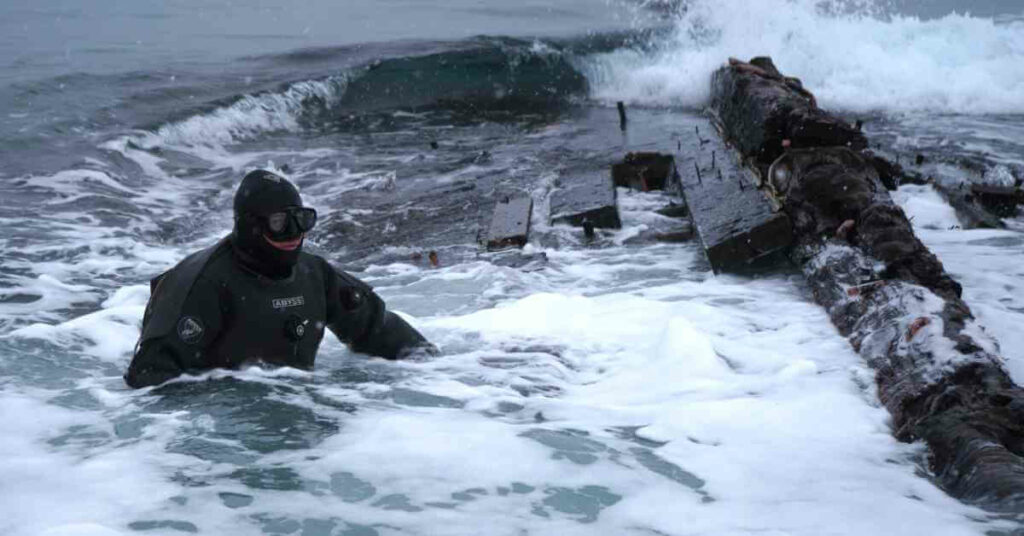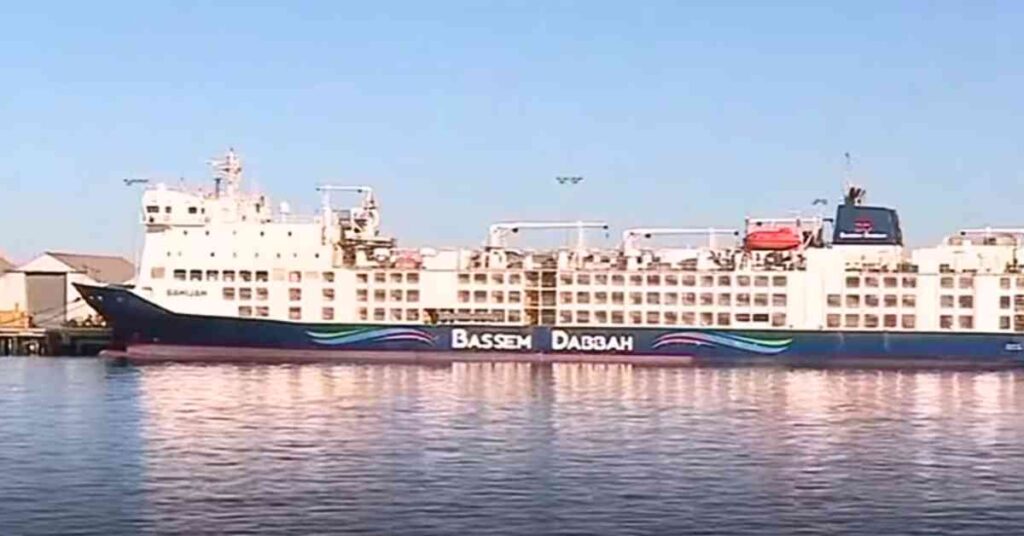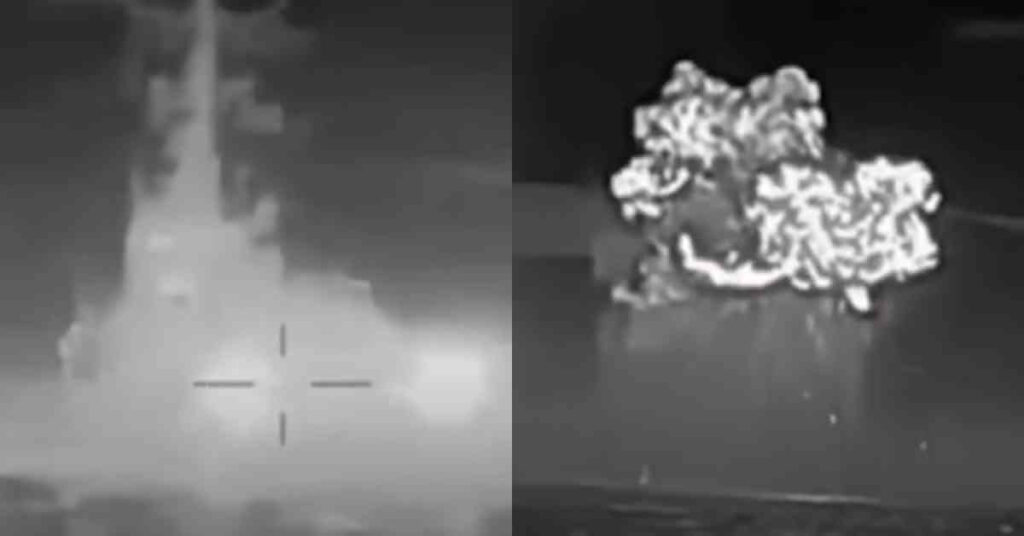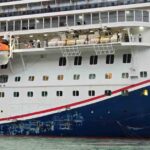Watch: Air Starting Valve Of Main Engine – Construction and Working
The air starting valve of a marine engine is responsible to start the engine from a standstill or stop position.
It also helps in reversing and emergency stopping or crash stopping of the engine if needed.
The Air starting valve is fitted at the centre of each cylinder head, controlling the air supply to the combustion chamber at a 30 bar pressure.
The air supply pipe is connected to the cylinder head from the air manifold, which opens inside the cylinder head where the air starting valve is fitted.
To protect the air manifold from hot gases and backfiring from the cylinder, a flame arrester is fitted in the air supply pipe near the cylinder head.
Parts of the Air Starting Valve:
The body of the valve, which is usually made of mild steel, is provided with circumferentially grooved ports to supply the starting air.
The spindle is made up of high tensile or stainless steel with a balancing piston in the middle.
The valve and seat have contact face stellite coated or hardened.
The valve Closing spring is made from Stainless steel
Operating piston is made up of high tensile or stainless steel.
Top Cover with tightening screws.
Working of Starting air valve:
In MAN Engines, the main starting air at about 30 bar pressure is introduced from the manifold into the chamber, just above the valve and the seat, via the circumferential ports in the valve body.
However, this air at 30 bar will not open the valve because of the spring pressure, which is holding the valve shut, in addition to an area of the balance piston that helps in keeping the valve lid shut as the valve is pneumatically balanced.
To open the valve, the air distributor supplies air at 30 bar which enters the starting air valve from the top of the valve body.
This pressure acting on the top will overcome the spring force which was holding the valve shut, and opens the valve, leading to high-pressure air entering the combustion chamber and moving the piston down.
When the air signal from the air start distributor is vented, there will be no more air pressure on top of the starting air valve, which means, the spring will close the valve.
To understand how the complete air starting system works, please watch our video.
In the Wartsila engines, the valve construction is almost similar to that of the MAN engine, the only difference is in the operating piston which is of stepped type.
In this type of air start valve, air on both sides of the operating piston is supplied via a control valve to maintain positive closing. This ensures the valve will remain closed even when the gas pressure is higher than the starting air pressure when the cylinder is firing.
The control valve will supply the air on top of the operating piston and cut the supply from the bottom of the piston at the same time, opening the valve and supplying the start air into the cylinder.
To close the valve, the air is supplied to the bottom part, venting the upper portion of the operating piston. This also helps in providing a cushioning effect to the valve as the air on top dampens the closing.
The air to operate the valve comes from the main air start supply. The distributor pilot air operates the pneumatic change over valve.
Problems in Air Starting Valve:
Sticking of Valve: This happens when there are carbon and soot deposits on the valve, seat spindle, valve piston etc., making the valve difficult to close fully.
Leakage of the valve: Sticking of the valve may also cause valve leakage as the valve is not closed fully. The best method to find out if the valve is leaking or not is by checking the starting air pipeline temperature, especially during manoeuvring and starting up of the engine.
Valve stuck in open position: When the air starting valve of a unit is stuck in an open position, it is advisable to cut off the unit by lifting the fuel pump roller of that unit, and replacing the air starting valve once the engine stops.
Disclaimer: The authors’ views expressed in this article do not necessarily reflect the views of Marine Insight. Data and charts, if used, in the article have been sourced from available information and have not been authenticated by any statutory authority. The author and Marine Insight do not claim it to be accurate nor accept any responsibility for the same. The views constitute only the opinions and do not constitute any guidelines or recommendation on any course of action to be followed by the reader.
The article or images cannot be reproduced, copied, shared or used in any form without the permission of the author and Marine Insight.
Do you have info to share with us ? Suggest a correction

About Author
An ardent sailor and a techie, Anish Wankhede has voyaged on a number of ships as a marine engineer officer. He loves multitasking, networking, and troubleshooting. He is the one behind the unique creativity and aesthetics at Marine Insight.
Latest Videos Articles You Would Like:
- Cruise Ship Damaged Due To Severe Weather, Passengers Stuck Abroad
- Archaeologists Examine 19th-Century Shipwreck Found On Canadian Coast
- Australia Stops Livestock Ship From Sailing Around Africa To Israel Amidst Houthi Attacks
- Iran Warns U.S. Of Targeting Cargo Ships Following Latest Airstrikes On Houthis
- Watch: Ukrainian Forces Destroy Russian Missile Boat In Black Sea Operation
- Two Dead After Tragic Collision Between Water Taxi And Passenger Ferry In the Philippines
Subscribe To Our Newsletters
By subscribing, you agree to our Privacy Policy and may receive occasional deal communications; you can unsubscribe anytime.















